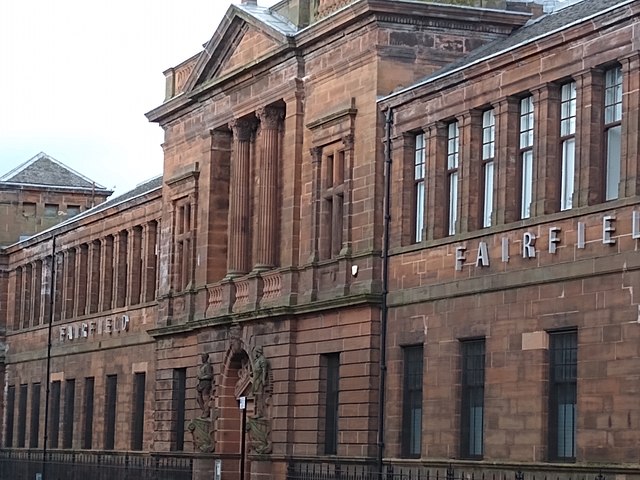SS Volturno was an ocean liner that caught fire and was eventually scuttled in the North Atlantic in October 1913. She was a Royal Line ship under charter to the Uranium Line at the time of the fire. After the ship issued SOS signals, eleven ships came to her aid and, in heavy seas and gale winds, rescued 521 passengers and crewmen. In total 135 people died in the incident, most of them women and children in lifeboats launched unsuccessfully prior to the arrival of the rescue ships.
SS Volturno (1906)
'The Burning of the S.S. Volturno'; undated painting by William Shackleton
Fairfield Shipbuilding and Engineering Company
The Fairfield Shipbuilding and Engineering Company, Limited, was a Scottish shipbuilding company in the Govan area on the Clyde in Glasgow. Fairfields, as it is often known, was a major warship builder, turning out many vessels for the Royal Navy and other navies through the First World War and the Second World War. It also built many transatlantic liners, including record-breaking ships for the Cunard Line and Canadian Pacific, such as the Blue Riband-winning sisters RMS Campania and RMS Lucania. At the other end of the scale, Fairfields built fast cross-channel mail steamers and ferries for locations around the world. These included ships for the Bosporus crossing in Istanbul and some of the early ships used by Thomas Cook for developing tourism on the River Nile.
The imposing red sandstone offices of the Fairfield Shipbuilding and Engineering Company on Govan Road, which from 2013, has formed the Fairfield Heritage Centre.
The former Fairfield shipyard continues in operation as part of BAE Systems Surface Ships.
HMS Delight, a Daring-class Destroyer launched at Fairfield in 1950, was the Royal Navy's first all-welded warship.





